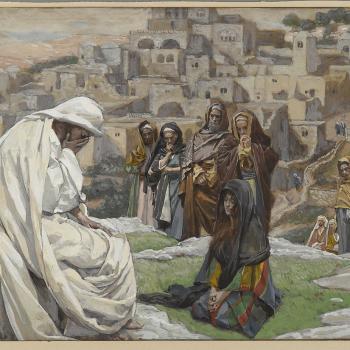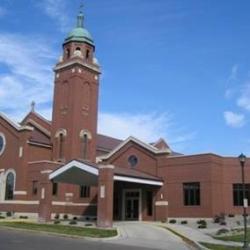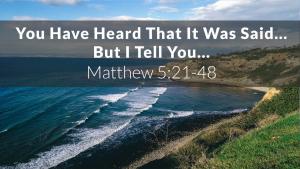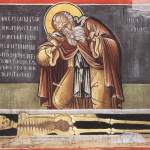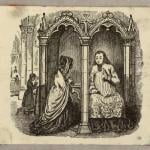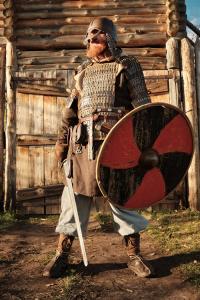
Jesus was a prophet of the renewal of Israel in opposition to Israel’s Roman occupiers and obsequious Judean puppet rulers. That’s the import of Richard A. Horsley’s work, since the 1980’s, of uncovering a historical Jesus in the political, economic, and religious context of first-century Palestine. That position and its thorough defense appear in Horsley’s 2014 book Jesus and the Politics of Roman Palestine.
Historians, sociologists, and archaeologists have opened up previously unavailable views of life in first-century Palestine. Horsley was among the first historical Jesus researchers to make substantive use of this new data. Richard A. Horsley is a Distinguished Professor of Liberal Arts and the Study of Religion at the University of Massachusetts, Boston. After this post on Horsley’s work in general will come a more detailed view of Jesus and the Politics of Roman Palestine.
Richard A. Horsley Publications
Horsley is the author of numerous books and articles, including:
- Jesus and the Spiral of Violence: Popular Jewish Resistance in Roman Palestine, 1987
- With John S. Hanson, Bandits, Prophets, and Messiahs: Popular Movements in the Time of Jesus, 1985
- With Neil Asher Silberman, The Message and the Kingdom: How Jesus and Paul Ignited a Revolution and Transformed the Ancient World, 1997
- With Jonathan A. Draper, eds, Whoever Hears You Hears Me: Prophets, Performance, and Tradition in Q, 1999
- Jesus and Empire: The Kingdom of God and the New World Disorder, 2003
- The Liberation of Christmas: The Infancy Narratives in Social Context, 1989
- Jesus and the Politics of Roman Palestine, 2014
- The Prophet Jesus and the Renewal of Israel, 2014
- You Shall Not Bow Down and Serve Them, 2021
A longer list appears in Wikipedia.
The following by or about Richard A. Horsley I found free online:
- “1 Corinthians: A Case Study of Paul’s Assembly as an Alternative Society,” in Paul and Empire: Religion and Power in Roman Imperial Society, ed. Richard A. Horsley, 1997, pp. 242-52.
- Review of Reza Aslan, Zealot: The Life and Times of Jesus of Nazareth, free access on Sage Journals, 1914.
- Jennifer A. Quigley, “Review of Richard A. Horsley, You Shall Not Bow Down and Serve Them, in Journal of Economics, Theology and Religion, posted by editors 5/30/23.
- Interview of Richard A. Horsley on his book The Prophet Jesus and the Renewal of Israel, YouTube, 2014.
- “Early Christianity and Politics,” Interview of Richard A. Horsley and Neil Asher Silberman, on Fresh Air, December 8, 1997.
An incarnational Jesus
Central to Richard A. Horsley’s work is the conviction that one cannot understand Jesus as a historical figure except in relation to his first-century Eastern Mediterranean world. Once that point is even suggested, it seems like the most obvious thing in the world. But it’s not the way people my age were taught about Jesus. We learned Jesus’ words, mostly individual sayings without context, some of which we memorized. Jesus was, to us, a man imbued with divine power, which he used out of care for suffering individuals. We learned of Jesus’ conflicts with religious leaders and learned to see Judaism as one thing and Christianity as another. The latter, we imagined, was a vast improvement on the former. We learned nothing about the Roman Empire except for the so-called peace Rome brought, the “Pax Romana.” That providentially enabled Christianity to spread throughout the Mediterranean world.
Just about everything we learned tended toward a false impression of the first-century Palestinian historical man Jesus. It was a Jesus taken out of his historical context, and that’s not the way to understand anybody. Besides common sense, church doctrine also should have led us to reject an ahistorical approach to Jesus. The doctrine in question is the incarnation. When we understand Jesus in the historical context of first-century Palestinian politics, economics, culture, and religion, we get a more incarnational Jesus. Ignoring that context makes Jesus out to be perhaps more, perhaps less, but certainly not exactly human. (See my series of posts on “A More Incarnational Jesus.)
The following on Horsley’s use of politics and economics uses the Fresh Air interview of Horsley and Silberman.
Palestine under the Roman Empire
The largest, most powerful factor in the first-century political and economic context was the Roman Empire. Rome’s power around Palestine had been growing since a half-century before Jesus’ birth.
Shortly after Jesus’ birth the powerful client ruler King Herod died. This was a significant event for Galilee, where Jesus spent most of his life and public career. With Herod’s kingdom split four ways, his son Herod Antipas ruled in the North, i.e., Galilee and Perea. Galilean villages, Jesus’ home territory, no longer were the hinterland, under the radar of Jerusalem’s kings. Antipas set up shop practically next door to the entire population. He built a capital, Tiberias, at the west shore of the Sea of Galilee. He sponsored more heavy construction at Sepphoris.
Galilean life had been following the relatively peaceful ways of subsistence farmers with little interference from distant, Romanized Jerusalem. Suddenly, with all Antipas’ building projects, life got more intense. Villagers worked on the projects and paid for them through taxes. Subsistence villagers had to learn to deal with money and markets. Debt was a larger part of the way the economy functioned. Fishing was no longer just a way to feed a family. The exploitation of The Galilee became an industry, producing and marketing salted fish. “Salt Fish” became another name for Mary of Magdala’s hometown. Fishers worked day and night, harvesting tons of fish to feed the empire’s voracious appetite. Taxes, tolls, and fees left peasants and other workers barely enough to survive – less than enough if harvests were poor.
That, with its armed soldier enforcers, was the world of the newly powerful Roman Empire. With its religious trappings, it was the air Jesus breathed, the social, political, economic world in which he lived.
Themes in Horsley’s work
Social norms, politics, economics, and religion were not separate areas of life as we imagine them. The religious experience was also political, economic, and part of everyday life. Jesus’ preaching, in parables, controversies, incisive sayings, and mighty deeds, dealt with everyday matters in a world disrupted by an increasingly intrusive Roman Empire. The Kingdom of Heaven Jesus proclaimed was (at least potentially) near at hand. Very much unlike a place we long to get to after we die.
That is an overarching theme in Horsley’s work. Other themes play a supporting role:
- Understanding Jesus and his first followers as Jews. Jesus did not start a new religion. His immediate successors did not think of themselves as Christians in opposition to Jews.
- The artificiality of taking “Judaism” as a concept that embraces the whole people of Israel – Judeans, Galileans, and more. It obscures the many differences between Judeans and Galileans. Jesus promoted Galilean-type village culture and values. It’s a misunderstanding and a mistranslation to see Jesus as in opposition to “the Jews.” Jesus’ main religious opponents are a certain segment of the Judeans.
- Jesus as a movement leader. Scholars have seen Jesus as an apocalyptic preacher of the end of the world or a sage preaching individual salvation. Instead, Jesus was a leader of a movement aimed at restoring the whole people of Israel. That movement didn’t start only after the resurrection.
- Whole story and overall narrative, not individual sayings. In the stories Jesus’ identity comes across. Horsley looks for historical verisimilitude in a story, rather than the authenticity of an individual saying.
- Reconciling Jesus as spiritual leader and leader of a peasant movement. God is concerned about the quality of people’s lives. Commandments are religious obligations but also principles of social policy and of a socially just village life.
Mark and Q
In Jesus and the Politics of Roman Palestine, Richard A. Horsley uses the Gospel of Mark and the hypothetical “Q” as sources primarily. Mark is the earliest Gospel. Q, a collection of sayings of Jesus, is a scholarly construct. Scholars noticed that Matthew and Luke have this material in common, and it’s not in Mark. The theory is Matthew and Luke got that material from a then-extant, now-lost source. Mark and Q are thought to be the closest to Jesus’ time ([p. 17).
In Q Horsley sees more than a haphazard collection of sayings. That, seemingly, would have justified the scholarly approach that focused on individual sayings without context. But the sayings in Q hang together in “a series of Jesus’ speeches on key concerns of communities of a Jesus movement” (p. 13). Again, taking the whole, rather than individual sayings, a historically realistic, incarnational Jesus in context appears.
Mark and Q, along with Matthew and Luke, present Jesus as a prophet and movement leader intent on the renewal of the people of Israel. Opposition to this mission consists of priestly, scribal, and pharisaic rulers of Judea, serving basically at the behest of Rome. That’s Richard Horsley’s summary conclusion in Jesus and the Politics of Roman Palestine. Future posts will explore some of Horsley’s supporting data and arguments.




